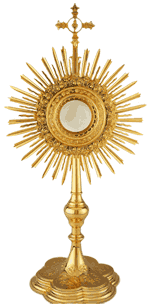
The month of May is traditionally dedicated to Mary in many cultures, since May is considered the season of the beginning of new life. In ancient Roman culture, May was dedicated to Flora, the goddess of bloom, of blossoms, and the Romans celebrated ludi florales (floral games) at the end of April, asking the help of Flora for all that blooms since May 1 was considered the beginning of growth. In the same way, the Blessed Virgin Mary gives us the newness of life in the person of Jesus Christ so that we might become new creations born into Eternal Life.
Since medieval times, we begin to see a connection between Mary and the month of May. Among the earliest witnesses are: Alphonsus X, King of Castille, Spain (+1284) with his “Cantigas de Santa Maria.” Here and elsewhere, both Mary and the month of May are greeted, welcomed and celebrated on specific days in May. Later, it became the custon in Italy to devote the whole month of May to Mary. On each day of the month, special devotions to Mary were organized.
Today, May crownings occur in many Catholic parishes and homes with the crowning of a statue of Mary. The ceremony traditionally takes place with young girls dressed in dresses carrying flowers (traditionally hawthorn) to adorn the statue. One of the girls (often the youngest) carries a crown of flowers or an actual golden crown on a cushion for placement by the May Queen (often the oldest girl) on the statue. The flowers are replaced throughout the month to keep them fresh.
Crowning Mary is associated with adding ornamentation to an icon of Mary, sometimes as simple as adding additional gold trim. Perhaps in homage to this, Pope Clement VIII (+1605) added two crowns to the icon of Mary with the Infant Jesus in the Saint Mary Major Basilica in Rome. The crowns were eventually lost, but were replaced by Gregory XVI in 1837 in a Rite that was to become the standard practice for crowning.




